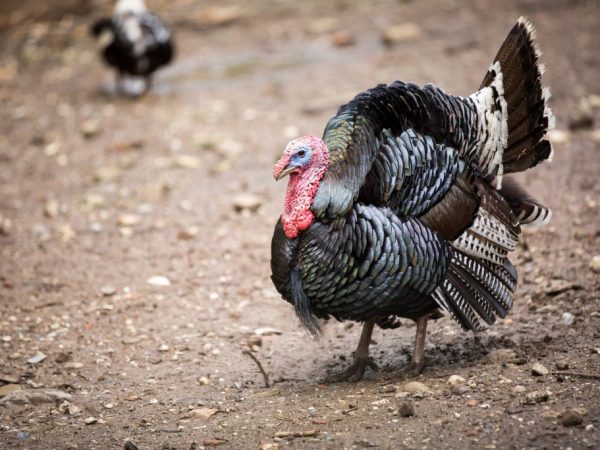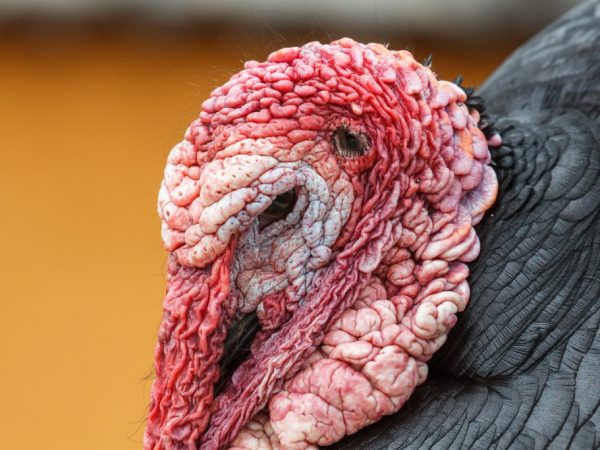Using amprolium for turkeys
When raising poultry, farms often face infectious diseases. Amprolium for turkeys has become a proven remedy in the treatment of turkey livestock against common coccidiosis.

Using amprolium for turkeys
Pharmacology of the drug and composition
Amprolium for turkeys refers to a water-soluble powder, the color of which can be in acceptable shades of white and light yellow. The main active ingredient is hydrochloride, which is 13 of the total composition. Among other components that lead to amprolium is the lactose component.
The drug is packaged in different volumes from 50 grams to 5 kilograms in paper bags with a polyethylene cover. In the form of packing material, bags of a double layer of polyethylene can act. Plastic containers can also be packaged.
Amprolum for turkeys is an anticoccidial drug that is active against certain types of coccidial pathogens. The active substance hydrochloride in its chemical composition is closest to the B1 vitamin thiamine, which supports the viability of coccidial bacteria. Its effect is reduced to penetration into the cellular component of bacteria, occupying the binding centers and causing a disturbance in the metabolism of carbohydrates, which is the reason for the death of coccidial bacteria.
The membranes of the cells of the mucous membranes of the intestines of turkeys is practically impermeable to the penetration of hydrochloride, therefore, the drug has almost no toxic effect on their organisms, it belongs to a low-toxic group of drugs. Amprolium is widely used to treat other domestic animals such as chickens, chickens and rabbits.
The main effect of the active component of amprolium for turkeys is directed to the intestinal mucous membranes and up to 97% of this substance is excreted from the body of birds naturally with droppings. Due to its compatibility with vitamin complexes and feed additives, amprolium for turkeys is widely used in agriculture.
Indications and effectiveness
Among major diseases poultry, in which veterinarians recommend using amprolium:
- pathogens with coccidial etiology and some types of eimeria parasitizing in the intestines,
- parasitic worms of the cestode class,
- diseases caused by trematodes,
- entomoses caused by insects.
The effectiveness of amprolium in turkeys depends on several factors that affect the success of curing poultry, including:
- the effectiveness of the active substance is influenced by the thermal regime and humidity indicators in the room where the turkey generation is kept,
- the conditions of keeping turkeys are associated with the effect of the drug on the body, including the quality of the bedding material and the feed ration.
The types of infectious pathogens, the presence of associated (intercurrent) diseases that complicate the course of the underlying disease, the sensitivity of parasitic pathogens to the active substance of the drug are also of great importance for the effectiveness of the effect of the active in amprolium hydrochloride.
Recommended doses

Means for prevention and treatment
Amprolium for turkeys, chickens, chickens and rabbits can be used for both treatment and prevention. The dosage and method of application depends on the purpose of the drug.
Water supply
The use of amprolium with water for turkey poults is possible for two purposes:
- for the purpose of prophylaxis, the therapeutic drug is used from the age of turkey poults from three days throughout the entire period of development until they reach the age of three to four months, while the daily standardized dose is no more than 0.3-0.35 kilograms of powder dissolved in 500-600 liters drinking water, or pure active substance hydrochloride in the amount of 200-220 milligrams per liter of liquid,
- for medicinal purposes for young animals of the same age, amprolium is recommended to be given at a dosage of 0.4 kilograms of substance per 500 liters of liquid per day or 230-240 milligrams per 1 liter, the treatment period is 1 calendar week.
When treating turkey poults and chickens with amprolium using it as an additive to drinking water, the solution with the drug should be the main drink for the bird, without using pure water.
Feeding with feed
The use of amprolium 25 as an additive to feed ration it is also possible in one of two possible directions:
- the daily dose for prophylaxis is no more than 0.3-0.4 kilograms of medicine per 1 ton of feed, or at the rate of 120-130 milligrams per 1 kg,
- the daily dose for the treatment of turkey poults is up to 0.8 - 1.0 kilograms of the drug per 1 ton of food or up to 240 milligrams per kg, while the treatment period is from 7 to 10 days, followed by a transition to prophylactic doses.
For adult birds, the dosage of amprolium to turkeys is 0.1 percent of the volume of the feed ration.
Contraindications and overdose cases
Among the contraindications for the use of amprolium hydrochloride in the prevention and treatment of turkeys, the instruction contains the following cases:
- the youngsters reach 16 weeks of age,
- the period of laying in layers, since the active substance is released from the body of birds along with the egg,
- the simultaneous use of other anti-coccidial medications.
If you follow the instructions and adhere to the recommended dosages, side effects on the organisms of birds are excluded.
The prepared feed mixture with Amrolium retains its active effect for seven days.
When used for poultry amprolium, its slaughter allowed no earlier than five days from the moment the drug is discontinued to turkeys. This time is enough for the remains of the active substance to leave the body of the birds. In the event of forced slaughter of poultry during the period of treatment with amprolium before the onset of a safe period, their meat is used for feeding other animals or for industrial production of flour.

